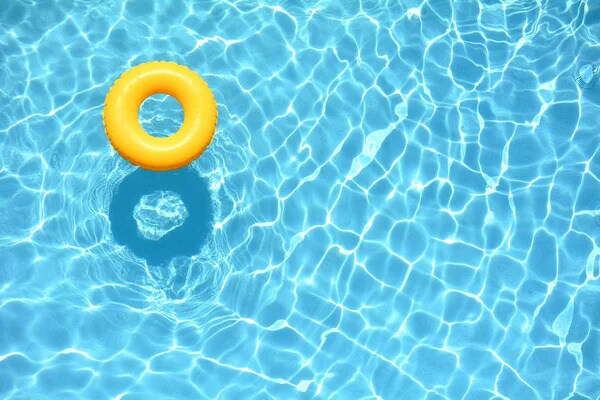Every pool owner’s aspiration is maintaining a sparkling, clear swimming pool. However, when the water takes on an undesirable green hue, it’s a clear indicator of an issue—often due to the presence of algae. At PoolRepair.fyi, we’re committed to helping you understand why your pool water might turn green and how to restore its pristine condition efficiently and safely.
Causes of Green Pool Water
Heavy Rainfall
Rainwater can introduce debris and dilute your pool’s carefully balanced chemicals. The influx of this unregulated water can disrupt the pool’s chemistry, creating a fertile environment for algae growth. It’s essential to monitor and adjust your pool’s chemical levels after rainstorms to prevent green water.
High Temperatures and Heat Waves
Hot and stagnant conditions accelerate algae proliferation, making summer a challenging season for pool owners. Regular maintenance, including frequent water circulation and chemical balance checks, is crucial during these times to keep your pool clear and algae-free.
Poor Circulation
Inadequately functioning pool pumps or filtration systems allow water to become stagnant, creating ideal conditions for algae to flourish. Ensuring consistent water movement is paramount, and regular checks on your pool’s circulation system can prevent such issues.
Neglected Maintenance
Overlooking routine tasks like brushing, vacuuming, and water testing provides an open invitation for algae and other contaminants. Adopting a regular maintenance schedule is not just advisable—it’s necessary for a healthy pool environment.
Copper in the Water
Occasionally, elevated copper levels from older plumbing or specific algaecides can react with chlorine, imparting a green tint to the water. Regular water testing is vital for early detection and helps maintain a crystal-clear pool.
Steps to Clean a Green Pool
Brush and Vacuum Thoroughly
Begin the cleaning process by thoroughly brushing the walls, steps, and every pool corner to loosen algae. Ensure you’re using the correct type of brush for your pool surface—nylon for fiberglass and steel for concrete—then follow with a comprehensive vacuuming session.
Test pH and Alkalinity
Before proceeding to shock treatment, it’s crucial to test your pool water’s pH and alkalinity. Aim for a pH range of 7.2 – 7.8 and alkalinity of 80 – 120 ppm to ensure the effectiveness of subsequent chemical treatments.
Execute a Double or Triple Shock
Deploy a concentrated chlorine shock treatment to eradicate algae. Adhere strictly to product guidelines and use appropriate safety gear. In cases of severe algal blooms, multiple shock treatments may be warranted.
Run the Filter
After shocking the pool, keep your filtration system running continuously for 24 to 48 hours. This helps remove dead algae and clears other contaminants, assisting in restoring the pool’s clarity.
Repeat as Necessary
If the water remains cloudy or green, redo the brushing, vacuuming, shocking, and filtering steps until the water is clear and inviting. Persistence is key to achieving optimal results.
If Green Water Persists Post-Shock
When green water stubbornly remains after shocking, consider these additional checks: test for high copper levels and treat with a metal sequestrant if necessary, ensure pH and alkalinity are perfectly balanced, conduct a deep clean, and verify the condition of your filter, replacing it if it’s clogged or defective.
Common Queries
Can Baking Soda Clear a Green Pool?
No, baking soda is not a solution for algae removal. While it can adjust pH and alkalinity, it doesn’t possess algicidal properties. Brushing, shocking, and effective filtration are essential for cleaning a green pool.
How Quickly Can a Green Pool Be Cleared?
The time required can vary, but typically, expect a restoration period of 4 to 5 days. Plan accordingly if you’re preparing for a poolside gathering.
Why Pools Turn Green in Winter
Winter greening can result from a neglected or compromised pool cover that allows debris and organic matter to infiltrate. Late spring openings in warming weather can also start algae growth. To prevent these issues, conduct monthly water tests during winter to avoid surprises when reopening.
Hashtags: #PoolRepair #GreenPoolSolutions #AlgaePrevention #PoolMaintenance #PoolTips


